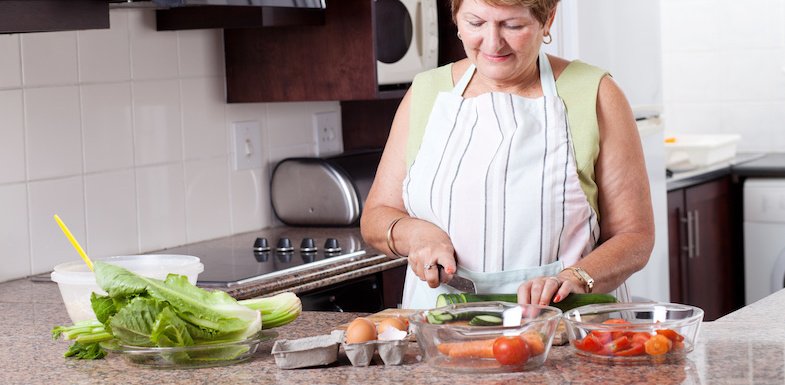
We all have our regular tendencies and practices, but the difference between a routine and a habit is that routines are relatively easy to adjust and change, while habits can be especially difficult to give up. That is the bad news. The good news is that you can change your habits. Doing so can help you reduce pain levels, get better sleep, and live a generally more healthy life. Here’s some of the leading research and theories on how to break bad habits, for good. Use the ones that resonate with you to help guide your habit change.
Stages of Change model
Contrary to popular belief or what you might think, habits are not stagnant creatures we are doomed to carry around for the rest of our lives. But they are also not generally changed overnight. The act of changing habits has many stages, and there are concrete ways to improve your chances of actually sticking with the changes you make.
One of the most difficult habits to change is addiction – to alcohol, drugs, food, or any other substance. Over 20 years ago, Carlo C. DiClemente and J. O. Prochaska studied the actions of alcoholics attempting to change their habit. They observed six distinct stages that were common in this process:
- Precontemplation: When the habit or addiction is identified.
- Contemplation: Understanding that there is a problem, and that a change needs to occur.
- Determination: The decision to change is made, and a plan to change is created.
- Action: The plan is put into place. Lifestyle changes are made in support of the plan, and support in various forms is gathered.
- Maintenance, relapse, recycle: This stage acknowledges that there may be times of relapse or faltering. This does not mean change has failed but that the stages must be re-entered with renewed commitment.
- Termination: At this final stage, the habit is completely changed. There is no chance of relapse.
This model is simply referred to as The Stages of Change. While it may seem simplistic, for addicts or others struggling with changing habits, this can be a powerful model for those who feel like they are making no real progress towards change, especially when they fall back into the old habit. Because it takes an average 66 days to actually change a habit (not the previously touted 28 days), this model can provide support, structure, and encouragement to the effort.
The Power of Habit, by Charles Duhigg
In the morning, you wake up, brush your teeth, and head downstairs. You feed the dog, maybe make coffee or hot tea, then make lunches and breakfast. You head upstairs, get dressed, and then head out to drop everyone off at school. Once at work, you check your social media accounts in the same order every day (Facebook, Twitter, Pinterest) before checking your personal email and finally settling down to work.
You go to lunch at 11:45. Eat the same sandwich. Back to work until 5, when you pick up the kids, do homework, make dinner, spend some family time in front of the TV or playing a game, then it’s off to sleep. Wake up the next day, and the cycle repeats. It is so routine that you don’t even really think about it anymore. Some days, you fall into bed and can’t remember one single moment clearly.
And this, says Pulitzer-prize winning author Charles Duhigg, is where our brains trap us into bad habits. In his book The Power of Habit, Duhigg explains how we can use the three-part habit loop to change our lives for the better instead of living out a daily routine. In his book, there are a number of actionable tips for how to break bad habits.
The habit loop
Part of understanding how this works is to focus on the habit loop. The habit loop consists of a cue, the actual routine, and then a reward. Duhigg found that most studies in habit formation focus on the routine. In fact, Duhigg found that it wasn’t changing the behavior that changed the habit as much as it was changing the cue and the reward.
Duhigg believes that the meaningful reward and appropriate cue change the behavior (the routine) more than changing the routine itself changes:
“This gets to how habits work. The reason why these cues and rewards are so important is because over time, people begin craving the reward whenever they see the cue, and that craving makes a habit occur automatically.”
In short, we can change our routine by cueing behavior instead and rewarding it in a meaningful way.
Our brain on habits
In his book, Duhigg presents an example of experiments in laboratory mice that illustrate this point. Researcher Wendy Wood pointed out that 40-45% of what we think of as daily decisions are actually just habits (like the daily routine above). Another researcher decided to examine what is happening in our brains as we go through these daily habits.
Ann Graybiel from MIT examined what happened to the brains of rats as they completed the world’s simplest maze: a T-shaped maze with the rat at the base and a piece of chocolate at the end of one of the arms. At first, when the rat was dropped in the maze, there was a flurry of brain activity. Time after time as the rat was dropped in the maze, the brain activity increased. But as the rat got used to the maze and finding the chocolate in the correct arm, brain activity decreased to a nearly sleeping level. The rat was completing the routine of finding the chocolate in a half-awake state.
This is what happens to our brains on habits. In some cases (like a healthy exercise or healthy eating habit) performing these actions on autopilot is a good thing. But what if you are trying to change a habit that is not healthy or form a new habit?
Create meaningful cues and rewards
The Power of Habit offers a very simple suggestion when it comes to these habit loops: wake up.
If you want to change a habit in a long-lasting way, it is important to understand your own habit loop and wake up in the middle where the routine is. The key to doing that is using an obvious cue and offering a meaningful reward. What kind of cues and rewards work? That is entirely up to the person who is making the change. Maybe you want to exercise more and watch less TV. Hanging your dog’s leash by the door where you hang your coat reminds you that it’s time for a walk. That’s the cue.
The reward should be something tangible; maybe it’s a movie, a special treat, or a new pair of shoes. Whatever it is, the reward needs to be something you would actually want to work towards. For another example, consider that you want to save money, but it seems like every time you try to save, something comes up and you are unable to put away any part of your check. Create a meaningful cue to change the behavior, and then focus on a reward.
An example might be:
- Meaningful cue: You receive a five-dollar bill
- Routine: The five-dollar bill goes in a savings jar
- Reward: After a certain dollar amount, treat yourself to something that is valuable to you, whether that is a new book, a sporting event, or a day trip somewhere.
You have made changing your behavior automatic but not in a way that puts you to sleep by choosing a specific cue and then designing an appropriate, meaningful reward.
We can wake ourselves up instead of sleep-walking through the daily routines of life by doing things like choosing a reaction ahead of time (i.e., when you get a five-dollar bill and don’t want to save it) and focusing on our specific rewards. Reminding ourselves to make mindful choices instead of falling into the sleepy rut of a routine we don’t remember is a powerful way to create big changes in our lives.

The power of small changes
Making changes to cues and rewards can help change habits, but sometimes a short-term small or grand gesture is the ticket.
Matt Cutts’s TED Talk urges his audience to try something new for 30 days. In these short periods of 30 days at a time, he climbed Mt. Kilamanjaro, wrote a novel, biked to work every day, and took one photograph a day. His experience made him feel more adventurous and alive, but the one thing he learned from this was counterintuitive to the 30-day experiment model:
“I learned that when I made small, sustainable changes, things I could keep doing, they were more likely to stick. There’s nothing wrong with big, crazy challenges. In fact, they’re a ton of fun. But they’re less likely to stick.”
In the end, it was the small changes within the larger ones that made the changes stick, not the grandiose gestures.
The Evans Health Lab, made most famous for its popular whiteboard video 23 1/2 Hours, has written extensively about what it takes to change a habit. While there are strong arguments for the fact that changing a habit can be a small, daily re-examination of smaller habits.
How to break bad habits: Getting started
So what does this mean for you? First, now is the time to make a change. No matter what time of year it is, you can start learning how to break bad habits now.
Next, understand that small, incremental changes in habits will probably be the most successful. This may mean instead of quitting smoking cold turkey, you get some help with a nicotine patch, nicotine gum, and a support group. Talk with your doctor about the habits that will have the best, most lasting effects for you and your pain.
Finally, change your environment, cues, and rewards so that you can be successful in changing your habits. Just as alcoholics who wish to quit drinking no longer go to bars to see friends, so, too, must other environmental changes be made for other types of behaviors. If you want to watch less TV, put the TV in the basement or in an inconvenient or uncomfortable room.
Instead of waiting for the urge to exercise to strike, schedule a weekly workout with a friend. Join a team with weekly practices and games. If you want to lose weight or eat more healthy foods, chop a week’s worth of vegetables. Then, keep them within easy reach in the refrigerator.
The best time to start changing a habit is right now. What steps will you take today to make positive, lasting change?